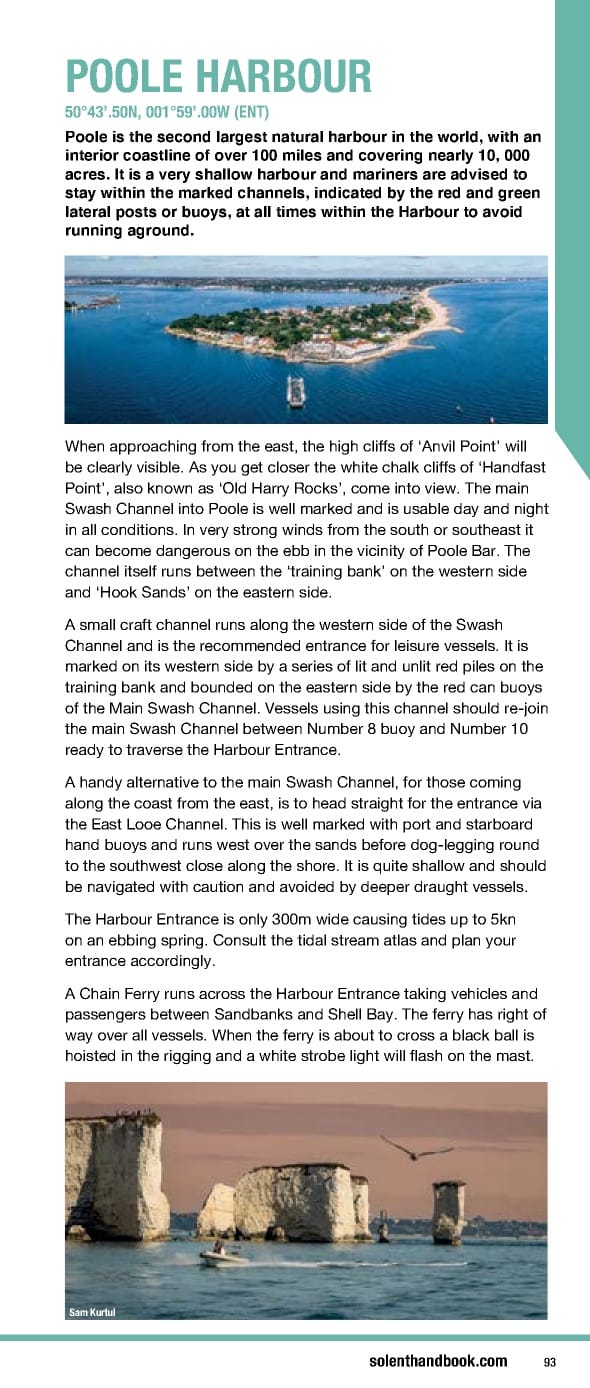POOLE HARBOUR 50°43’.50N, 001°59’.00W (ENT) Poole is the second largest natural harbour in the world, with an interior coastline of over 100 miles and covering nearly 10, 000 acres. It is a very shallow harbour and mariners are advised to stay within the marked channels, indicated by the red and green lateral posts or buoys, at all times within the Harbour to avoid running aground. When approaching from the east, the high cliffs of ‘Anvil Point’ will be clearly visible. As you get closer the white chalk cliffs of ‘Handfast Point’, also known as ‘Old Harry Rocks’, come into view. The main Swash Channel into Poole is well marked and is usable day and night in all conditions. In very strong winds from the south or southeast it can become dangerous on the ebb in the vicinity of Poole Bar. The channel itself runs between the ‘training bank’ on the western side and ‘Hook Sands’ on the eastern side. A small craft channel runs along the western side of the Swash Channel and is the recommended entrance for leisure vessels. It is marked on its western side by a series of lit and unlit red piles on the training bank and bounded on the eastern side by the red can buoys of the Main Swash Channel. Vessels using this channel should re-join the main Swash Channel between Number 8 buoy and Number 10 ready to traverse the Harbour Entrance. A handy alternative to the main Swash Channel, for those coming along the coast from the east, is to head straight for the entrance via the East Looe Channel. This is well marked with port and starboard hand buoys and runs west over the sands before dog-legging round to the southwest close along the shore. It is quite shallow and should be navigated with caution and avoided by deeper draught vessels. The Harbour Entrance is only 300m wide causing tides up to 5kn on an ebbing spring. Consult the tidal stream atlas and plan your entrance accordingly. A Chain Ferry runs across the Harbour Entrance taking vehicles and passengers between Sandbanks and Shell Bay. The ferry has right of way over all vessels. When the ferry is about to cross a black ball is hoisted in the rigging and a white strobe light will flash on the mast. Sam Kurtul 93 solenthandbook.com
 Solent Handbook & Directory April 2023- March 2024 Page 92 Page 94
Solent Handbook & Directory April 2023- March 2024 Page 92 Page 94